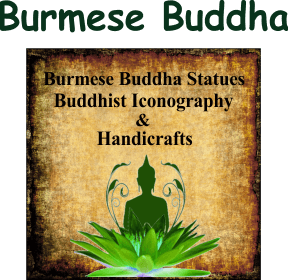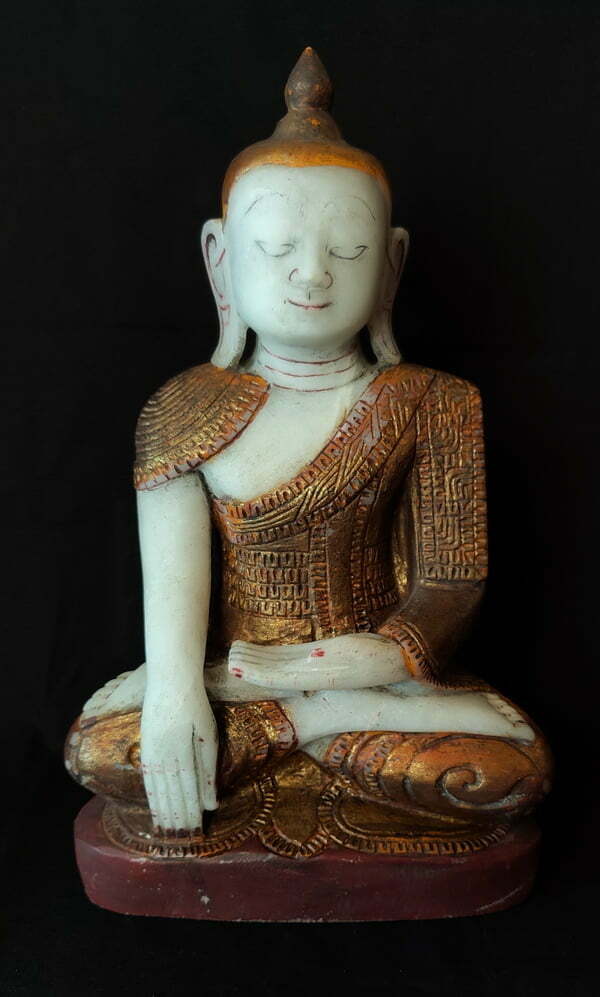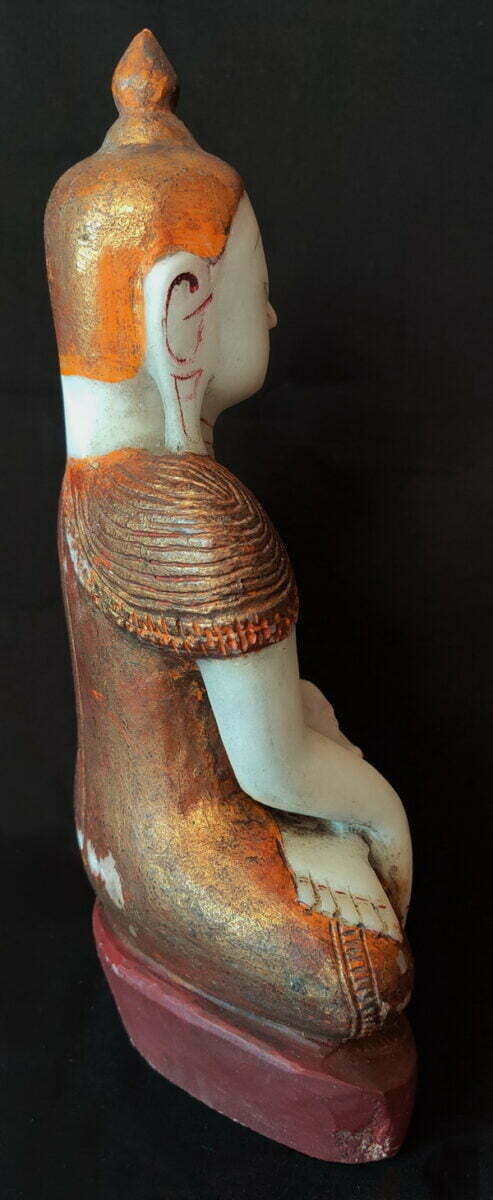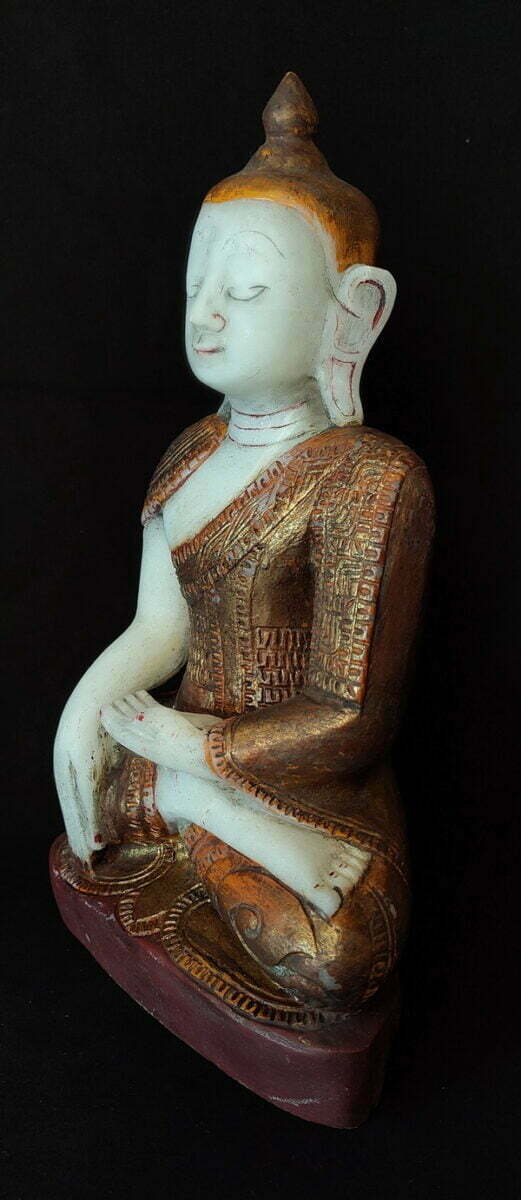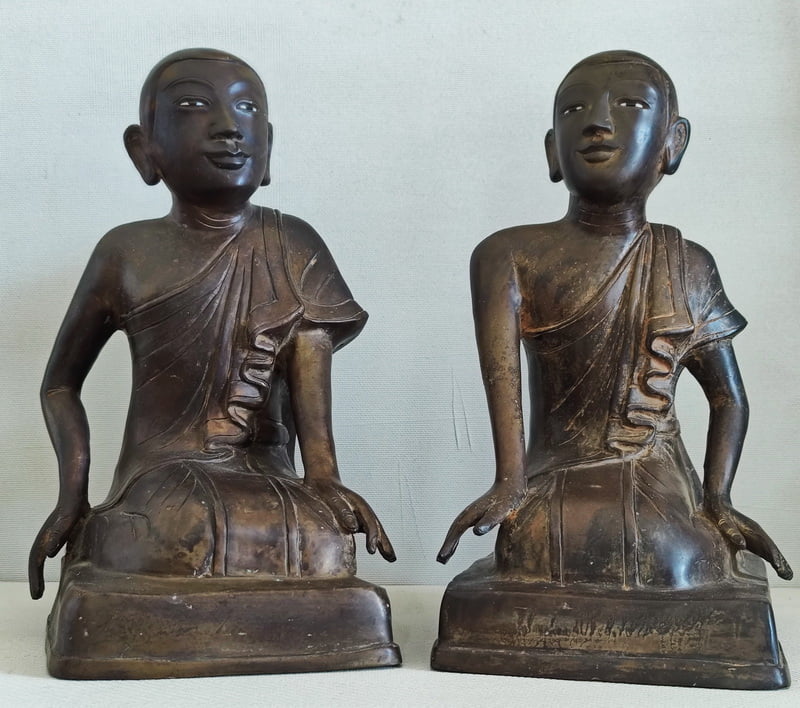Burmese Antique Alabaster Ava Buddha Statue
AGE: – Between 17th – 18th Century
CONSTRUCTION: – Alabaster
HEIGHT: – 37cm
WIDTH: – 21cm
#20 – PRICE: CONTACT
Burmese Antique Alabaster Ava Buddha Statue with a fully carved incised robe with the lapel draped over the right shoulder, a style introduced into Buddhist iconography during the Pinya Kingdom, prior to the Ava Kingdom, also known as the Vijaya State ruling central Myanmar from 1313 – 1365AD.
The ears, usnisha, and finial on this Buddha statue are typically seen in Ava-style Buddha statues, the ears are large and reach down to touch the shoulders. Fingernails are painted and the Buddha image is seated on a plain pedestal with the outline of the robe carved into the top of the pedestal with a circular incised pattern on the legs.
Read More
The paper “
Some Seventeenth-Century Images from Burma“, written by Jane Terry Bailey describes a couple of Buddha statues similar in facial features to this statue. One of the Buddha statues described in the paper is currently housed in the Ashmolean Museum in Oxford and the other in the Horniman Museum in London. In her writings, she states that there was no doubt about the date of the statue as it has been recorded as belonging to Elias Ashmole, heir to the collection of his ancestor by deed in 1659. He then gave it to the new museum at Oxford for its opening to the public in 1683.
The Kingdom of Ava was established in 1364 and did not officially become the capital of the Burmese kingdom until 1636. Between 1597 and 1626 it controlled most of Burma. Ava was referred to as Ratanapura “City of Gems” because of its richness and splendor up until it was almost destroyed by an earthquake in 1838 and was eventually abandoned in 1841 when King Shwebo Min moved the capital to Amarapura.
